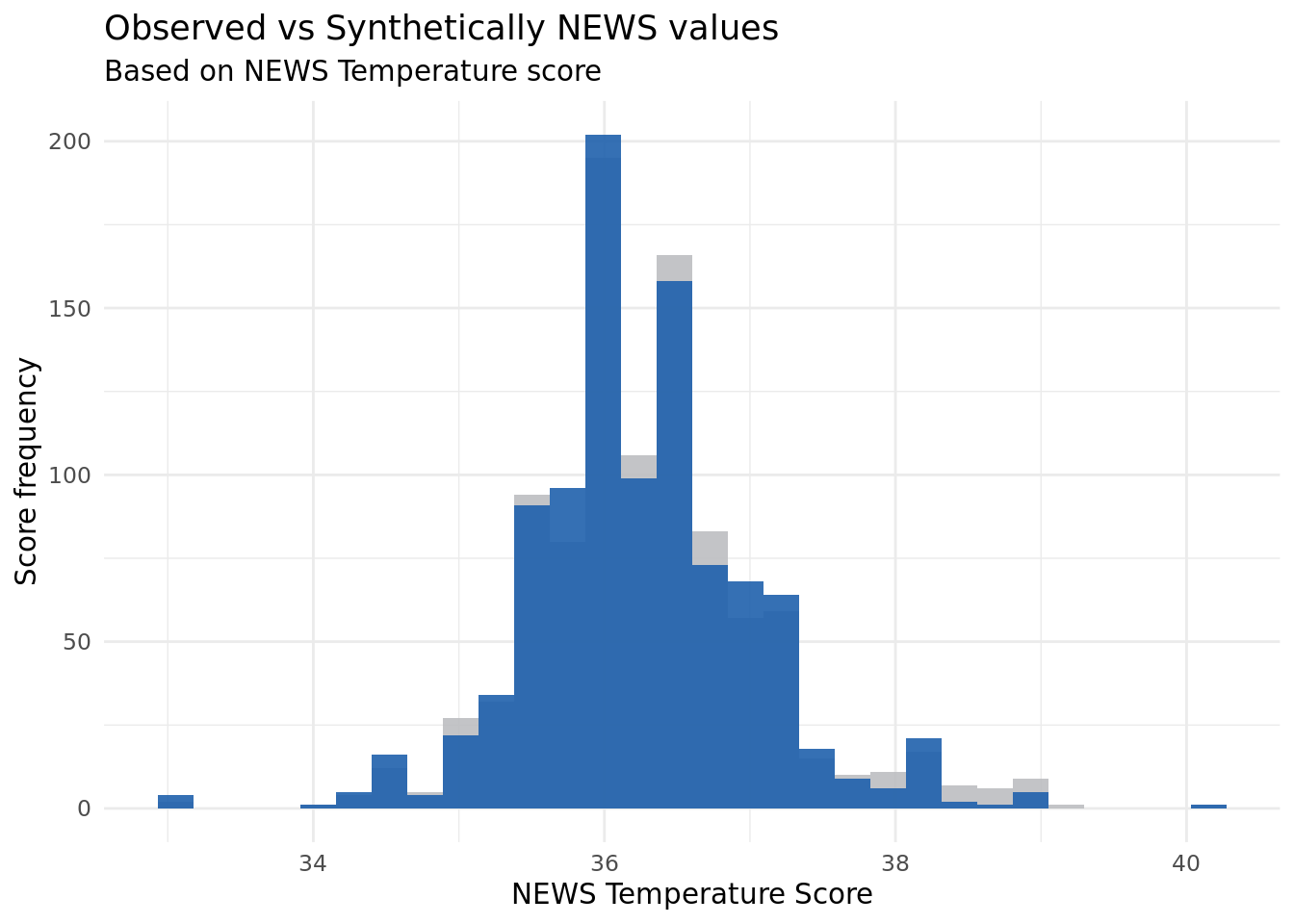Rows: 1,000
Columns: 12
$ male <dbl> 0, 1, 0, 1, 0, 0, 0, 0, 0, 0, 1, 0, 0, 0, 0, 1, 1, 0, 1, 0, 0, 1…
$ age <dbl> 68, 94, 85, 44, 77, 58, 25, 69, 91, 70, 87, 93, 61, 75, 97, 80, …
$ NEWS <dbl> 3, 1, 0, 0, 1, 1, 4, 0, 1, 1, 7, 2, 5, 1, 1, 3, 1, 5, 0, 2, 1, 2…
$ syst <dbl> 150, 145, 169, 154, 122, 146, 65, 116, 162, 132, 110, 166, 123, …
$ dias <dbl> 98, 67, 69, 106, 67, 106, 42, 56, 72, 96, 85, 90, 78, 80, 72, 81…
$ temp <dbl> 36.8, 35.0, 36.2, 36.9, 36.4, 35.3, 35.6, 37.2, 35.5, 35.3, 37.0…
$ pulse <dbl> 78, 62, 54, 80, 62, 73, 72, 90, 60, 67, 95, 87, 93, 65, 89, 145,…
$ resp <dbl> 26, 18, 18, 17, 20, 20, 12, 16, 16, 16, 24, 16, 26, 12, 16, 16, …
$ sat <dbl> 96, 96, 96, 96, 95, 98, 99, 97, 99, 97, 87, 95, 96, 96, 98, 99, …
$ sup <dbl> 0, 0, 0, 0, 0, 0, 0, 0, 0, 0, 1, 0, 0, 0, 0, 0, 0, 1, 0, 0, 0, 0…
$ alert <dbl> 0, 0, 0, 0, 0, 0, 0, 0, 0, 0, 0, 0, 0, 0, 0, 0, 0, 0, 0, 0, 0, 0…
$ died <dbl> 0, 0, 0, 0, 0, 0, 0, 0, 0, 0, 0, 0, 0, 0, 0, 0, 0, 0, 0, 0, 0, 0…
